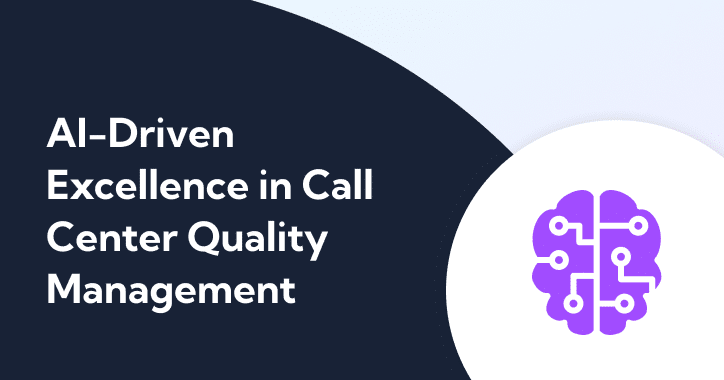Every contact center encounters its fair share of hurdles on the path to success. Why struggle in silence when you can face the problem head on?
Balto is here to help.
Fix-It Friday targets contact center leaders’ biggest frustrations with solution-focused content. Keep an eye out every other Friday as we tackle a new topic.
This week, we’re discussing an activity that consumes far too much time for far too many contact center managers: re-coaching.
Why Is Re-Coaching So Common?
In most contact centers, the line between coaching and re-coaching is pretty blurry.
According to a 2021 survey of more than 500 managers, the first coaching session is only effective 8% of the time. What’s more, agents need an average of three re-coaching sessions on top of that initial coaching session before implementing a new skill.
This means that, on average, 75% of the time managers spend “coaching” is actually spent re-coaching.
Is Re-Coaching Really a Problem?
There’s nothing wrong with dedicating time to coaching agents. In fact, it’s an important part of a manager’s job. But when it takes four sessions to implement just one new skill, there’s clearly a breakdown in efficiency somewhere along the way.
And the coaching sessions themselves aren’t the only time commitment. Managers report preparing for an average of two to three hours before sessions, then coaching for only about 34 minutes.
All told, this means that managers spend an average of 10-14 hours helping an agent implement one new skill. That’s at least a quarter of the work week! With so many other responsibilities on managers’ to-do lists, it’s simply not feasible to dedicate that kind of time to re-coaching.
The result? Something inevitably falls by the wayside. Managers are forced to prioritize coaching certain agents on certain skills, or they have to deprioritize their other duties to focus on coaching.
If you’re thinking there’s got to be a better solution, you’re right — but what is it?
Finding the Fix for Re-Coaching
Our survey found that, surprisingly, more hours of preparation resulted in more re-coaching sessions, and managers faced similar struggles regardless of whether they coached one-on-one or in teams. So, here are some fixes that transcend prep time and traditional coaching styles.
1. Turn Skills into Habits
Skill is the capacity to do something well, but habit is actually doing it — and doing it often. Re-coaching sessions aren’t happening because agents lack the capacity to do their jobs well, they’re happening because those abilities aren’t being implemented consistently.
After a coaching session, ask agents to keep a log of each time they use that newly coached skill in the coming days and weeks. Set a high target for the number of times the skill should be used for the best chances of ingraining the habit within your team.
Check in on agents’ reported skill usage, and see if their performance reflects any change as it relates to the skill. By asking agents to track their use of a new skill, you’re keeping them accountable. Ideally, that accountability results in habitual use of the skill without the need for so many re-coaching sessions.
2. Gamify Improvement
Motivation is tough to pin down, but when you gamify a goal, it positively affects motivation in work contexts.
Maybe you recently coached an agent on de-escalating calls or overcoming objections. You can gamify the use of these skills by tracking improvements in that agent’s supervisor requests or close rates.
As a result, the agent engages in competition with themselves, striving to outperform their previous best by implementing the new skill. For an added layer of gamification, keep a leaderboard for your entire team, tracking the skills you’ve recently coached and rewarding top performers.
3. Coach Live
Imagine a football coach that only watches game footage and suggests improvements based on a player’s past performance. It may sound ridiculous, but that’s exactly what happens in contact centers — every day is a proverbial game day for agents, and very few receive coaching from managers when they truly need it.
Providing agents with live coaching gives them the opportunity to implement a new skill immediately and eliminates the need for hours of prep time since you’re actively seeking out coaching opportunities, not listening to hours of call recordings.
Live coaching methods like whisper mode, walking the floor, or even peer coaching have the potential to solve many of the pain points associated with traditional coaching.
4. Implement Technology
Contact centers aren’t always keen to adopt new technologies. After all, if it’s going to take more time and effort to implement a solution than to just muscle through without it, what’s the point?
But gone are the days of hard-to-use tech. Today, there are solutions designed to integrate seamlessly with the systems that contact centers already use, and those solutions can transform contact center operations, particularly when it comes to coaching.
Technology like Balto’s Real-Time Coaching eliminates the need for prep time and makes live coaching a less distracting, more scalable practice.
With the help of AI, managers no longer have to listen to hours of call recordings or walk the floors in search of coachable moments — pre-set triggers alert them to positive or negative moments on calls; they can then listen live and send feedback through live chat.
The right technology enables managers to coach more agents on more skills in real time. This allows agents to implement changes immediately while staying engaged in their conversations.
Pick Your Fix, Forget Re-Coaching
Re-coaching is frustrating and common, but it’s not inevitable. You can scale great habits to your entire team without sinking hours into coaching the same skill over and over again — try these fixes for more effective and efficient coaching in your organization.Check back every other Friday for insight into a new topic, and reach out to fix-it@balto.ai if there’s a contact center issue you’d like to learn how to fix.






